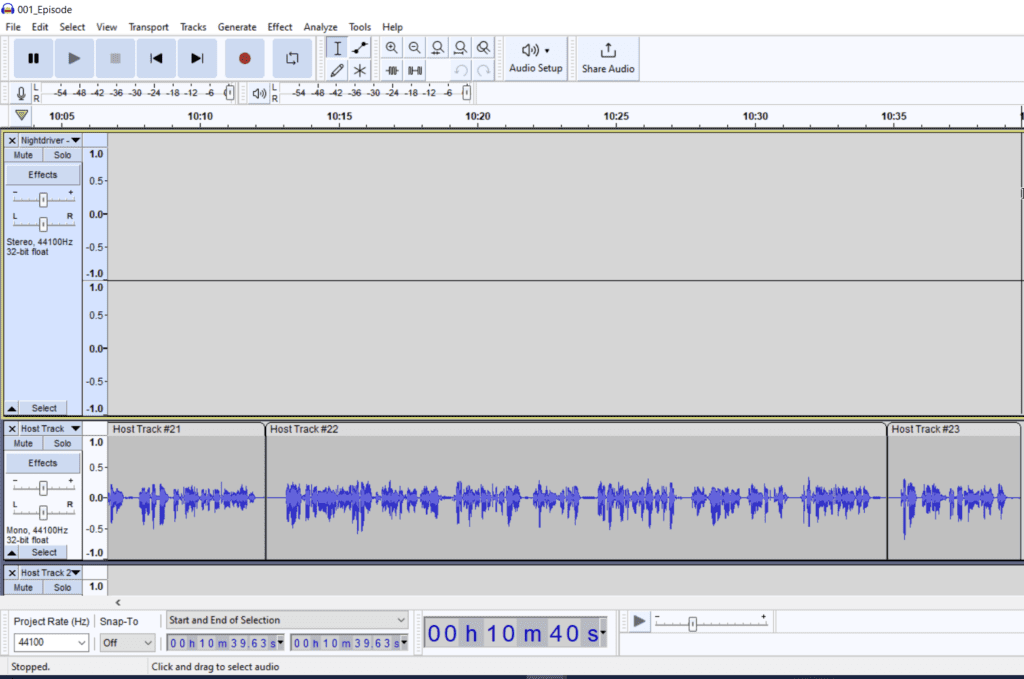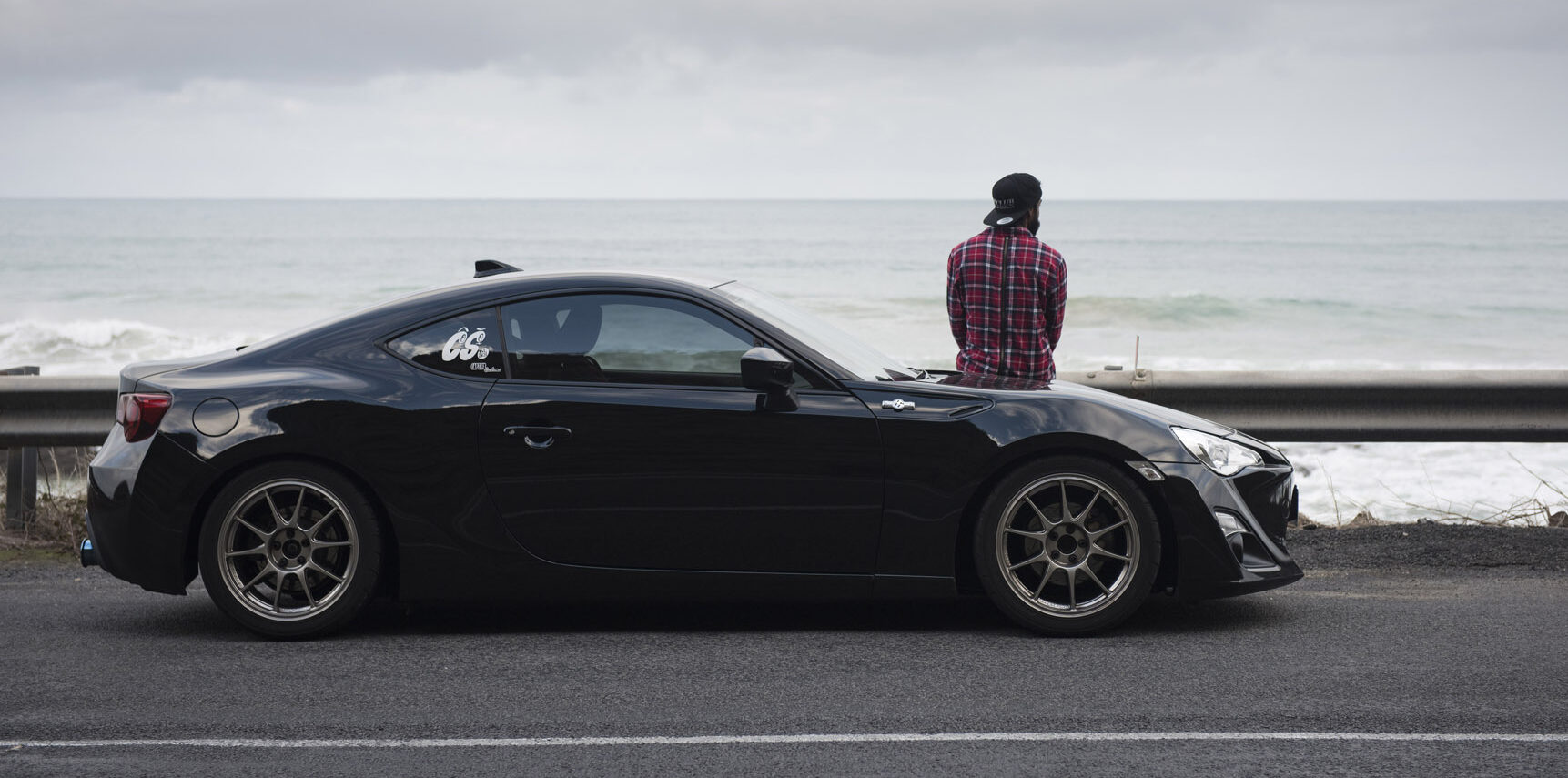Hi all, I hope you are doing well! I just wanted to post a blog post around my first podcast recording experience for the newly created “Lonely Drivers Driving Club” podcast! The podcast will be hosted by myself and co-hosted by a good friend (Justin). The theme of the podcast will be focusing on cars and mental health. There is an overlap between the two, which we look forward to exploring.
As to why I started a podcast… Well, you’ll need to listen to the first episode to find out :p
Future episode content will be about exploring the topics of mental health, grassroots motorsports in Australia, F1 and personalising our cars (along with the many “not planned” aspects of them) in the name of growing our community. In addition, a super exciting part that I’m looking forward to is interviewing fellow car enthusiasts and sharing their stories! Onto the experience…
Time to record…
I sat there with Audacity (an open-source, free audio recording program) open, pondering when I should hit record. Every time I would go to hit record, doubt on whether or not I should be doing this would creep into my thoughts, and I found myself hesitating. On the right-hand side of my screen sat a rough outline of the few topics I wanted to cover and some dot points on specific points I wanted to raise. Safe to say, even with a rough plan – this was challenging.
When it came time for audio waves to convert to 1s and 0s, here as some things that I did to help:
- Write out dot points to help guide the conversation, but don’t read from a script.
- Let the conversation flow naturally, and be bold and deviate from the planned topics if it feels relevant and exciting.
- If you go off-topic, steer the conversation back to the main point when possible.
- If parts of the conversation are irrelevant or need fine-tuning, edit them in post-production.
- Remember that podcasts are meant to be natural and conversational, so don’t stress too much about sticking to a rigid structure.

A couple of hours later…
After 23 separate recordings of various lengths – I finally made it to the end of the introductory episode. Why are there 23 recordings? I’d often need to be more precise on my initial point, or I’d have additional thoughts on something I wanted to add. Sometimes it was because I pronounced something a little strange, but I got used to pausing the recording and making minor adjustments as I went on.
I listened to the file a few times to ensure the topics I wanted to cover were accounted for and made sense. This was more challenging than your interview-style episode because it was just me for the introductory episode. I was effectively talking to myself and voicing my thoughts aloud, which I rarely do. Time will tell if it gets easier the more I do this!
Initial Reflections
As I sat back and waited for the completed recording to export to MP3, I reflected on some lessons I learnt from this experience. I look forward to learning more from recording and editing future episodes and honing my interviewing craft to get the best out of our interview guests. I’ve got a few in mind with unique stories I can’t wait to share with you (a fantastic car photographer, fellow time attack enthusiasts and even workshops we’ve done business with).
Here are a few that came to mind:
- Initially, it is scary and slightly strange, but don’t let it stop you. Once I got started – it made continuing a lot easier. I knew it would be before proceeding with the recording, which helped calm my nerves (somewhat).
- A tip I got from the Pat Flynn Podcasting course (Power Up Podcasting), which helped immensely, was to write out dot points but only to help guide the conversation. Podcasts are natural ~ you’ll begin talking on a topic, which could lead to another place that isn’t planned. That’s okay; if it remains true to the point, keep it! Otherwise, edit the bits that aren’t relevant or need fine-tuning.
- Invest in a decent Microphone and proper mounting solution – the audio quality is worth it. Especially as a host of a podcast! I’m using a Samson Q2U Microphone ~ $120, a Neewer Microphone Arm Stand, and a Knox Microphone shock mount as my “budget” podcasting set-up. I may also be using this for my WFH life too :p
- (Mainly for solo-casting or episodes) I got off-topic, forgetting the main point you were trying to make or wishing you could further expand on an idea. You’ll say stupid shit and realise you may be talking shit at some point. That’s all okay – just stop recording, go back to the part where you started and re-record. That’s how I hit 23 tracks for my first episode. With experience, that should decrease.
- Find a small trusted circle of trusted friends to test the pilot episode with – ask for feedback. It’s an excellent way to gauge how you went. My girlfriend mentioned I sounded nervous at times, and that’s okay. It’s only natural to be nervous – it’s the first time I’m doing something like this, and it’ll improve with time. Justin noted a significant gap at a certain point in the recording (I had accidentally forgotten to unmute a track in Audacity…)
Wrapping it up
Either way, I believe everyone sucks when they try something new for the first time. Unless you’ve got natural-born talent. The main point is to keep trying. Eventually, things will improve with consistency and time. So here’s to many more awkward recordings and solo episodes. It was insightful but also rewarding to get it done.
P.S. Have you had to do speeches at school, and there was 3 ~ 5 mins max on a topic? It’s a lot like that. Except for this time, you are discussing a topic of your choosing, and there is no fundamental structure – you get to decide it all! This time you can stop and re-record parts where you made mistakes or went on a tangent. Still nerve-wracking as hell, mind you.


